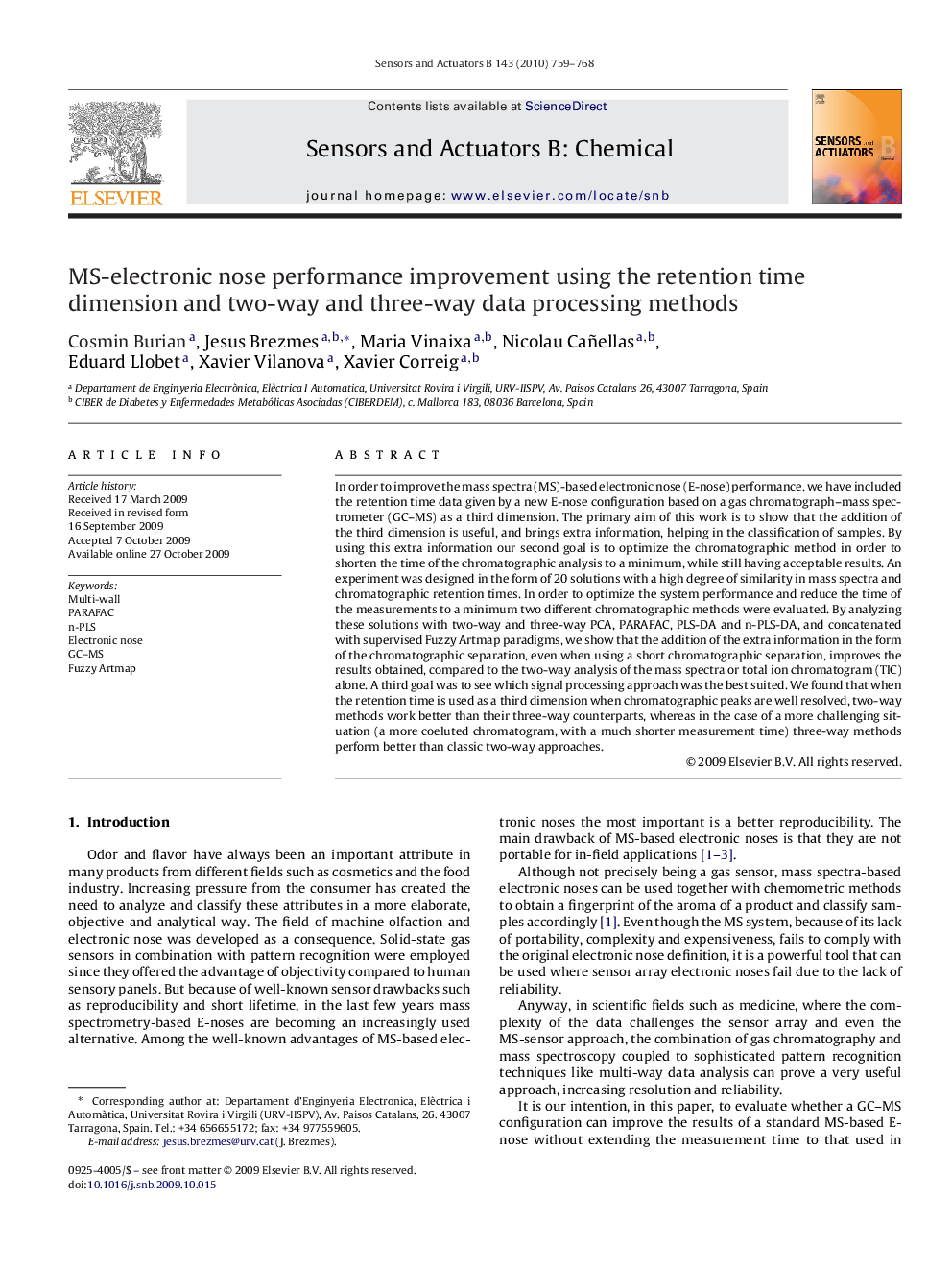| Article ID | Journal | Published Year | Pages | File Type |
|---|---|---|---|---|
| 743009 | Sensors and Actuators B: Chemical | 2010 | 10 Pages |
In order to improve the mass spectra (MS)-based electronic nose (E-nose) performance, we have included the retention time data given by a new E-nose configuration based on a gas chromatograph–mass spectrometer (GC–MS) as a third dimension. The primary aim of this work is to show that the addition of the third dimension is useful, and brings extra information, helping in the classification of samples. By using this extra information our second goal is to optimize the chromatographic method in order to shorten the time of the chromatographic analysis to a minimum, while still having acceptable results. An experiment was designed in the form of 20 solutions with a high degree of similarity in mass spectra and chromatographic retention times. In order to optimize the system performance and reduce the time of the measurements to a minimum two different chromatographic methods were evaluated. By analyzing these solutions with two-way and three-way PCA, PARAFAC, PLS-DA and n-PLS-DA, and concatenated with supervised Fuzzy Artmap paradigms, we show that the addition of the extra information in the form of the chromatographic separation, even when using a short chromatographic separation, improves the results obtained, compared to the two-way analysis of the mass spectra or total ion chromatogram (TIC) alone. A third goal was to see which signal processing approach was the best suited. We found that when the retention time is used as a third dimension when chromatographic peaks are well resolved, two-way methods work better than their three-way counterparts, whereas in the case of a more challenging situation (a more coeluted chromatogram, with a much shorter measurement time) three-way methods perform better than classic two-way approaches.
